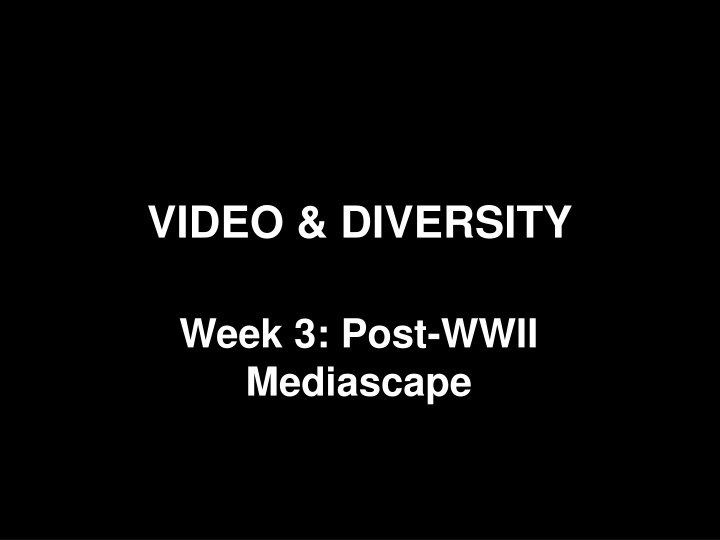
Insights on Media Production Processes Post-WWII
Explore the post-WWII mediascape through the lens of media production processes showcased in artworks like "Television Delivers People" and "Boomerang." Discover key questions on message control, production access, audience, and purpose in media creation as discussed by Armes. Reflect on the concept of video as an idea rather than just a medium, as proposed by Vito Acconci.
Download Presentation

Please find below an Image/Link to download the presentation.
The content on the website is provided AS IS for your information and personal use only. It may not be sold, licensed, or shared on other websites without obtaining consent from the author. If you encounter any issues during the download, it is possible that the publisher has removed the file from their server.
You are allowed to download the files provided on this website for personal or commercial use, subject to the condition that they are used lawfully. All files are the property of their respective owners.
The content on the website is provided AS IS for your information and personal use only. It may not be sold, licensed, or shared on other websites without obtaining consent from the author.
E N D
Presentation Transcript
VIDEO & DIVERSITY Week 3: Post-WWII Mediascape
Media Production Process: After watching Television Delivers People (1973) by Richard Serra and Carlotta Fay Schoolman and Boomerang (1974) by Serra, what do you think these works tell us about media production processes?
Media Production Process: After watching Television Delivers People (1973) by Richard Serra and Carlotta Fay Schoolman and Boomerang (1974) by Serra, what do you think these works tell us about media production processes? And how do they tell us?
Media Production: Is a construction
Media Production: Is a construction Process not product. (Armes, p.196)
Media Production: Is a construction Process not product. (Armes, p.196) Who is in control of the message?
Media Production: Is a construction Process not product. (Armes, p.196) Who is in control of the message? Who has access to production and distribution?
Media Production: Is a construction Process not product. (Armes, p.196) Who is in control of the message? Who has access to production and distribution? Who is the audience?
Media Production: Is a construction Process not product. (Armes, p.196) Who is in control of the message? Who has access to production and distribution? Who is the audience? What is the purpose (education, entertainment, propaganda, activism, and more)?
Video as an idea, as a working method, rather than a specific medium, a particular piece something to keep in the back if my mind while I m doing something else (Vito Acconci)
The 1940s - World War II 1941 Japan attacks Pearl Harbor, US enters the war 1942 Executive Order 9066, Japanese American internment Nazism and the Holocaust Women in the workplace (e.g. Rosie the Riveter) Racial segregation in the arm forces Atom bomb dropped on Hiroshima and Nagasaki; Japan surrendered in 1945 US becomes a superpower .
The 1950s The Cold War Nuclear arms race Korean War Red scare / HUAC Hollywood 10 1951-53 Julius & Ethel Rosenberg trial Civil Rights Rosa Parks, Emmett Till Post-WWII baby boom & rise of consumerist culture Television became the dominant media
Comparative Analysis: Guess Who s Coming to Dinner (1967) Dir. Stanley Kramer Flower Drum Song (1961) Dir. Henry Koster

